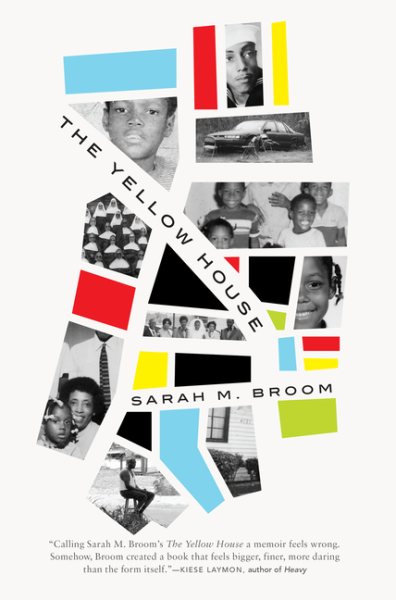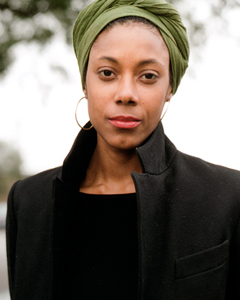Interview by Jana Hoops. Special to the Clarion-Ledger Sunday print edition (September 1)
 In her debut book The Yellow House, Sarah M. Broom presents a powerful memoir of the New Orleans she experienced as a child (growing up in a family of 12 children), and the house that swallowed up the dreams and finances of her resilient mother.
In her debut book The Yellow House, Sarah M. Broom presents a powerful memoir of the New Orleans she experienced as a child (growing up in a family of 12 children), and the house that swallowed up the dreams and finances of her resilient mother.
Broom earned a master’s degree in journalism from the University of California, Berkeley in 2004 and won a Whiting Foundation Creative Nonfiction Grant in 2016. She was a finalist for the New York Foundation for the Arts Fellowship in Creative Nonfiction in 2011, and has been awarded fellowships at Djerassi Resident Artists Program and The MacDowell Colony.
Her work has appeared in The New Yorker, The New York Times Magazine, The Oxford American, and O, The Oprah Magazine, and others.
Today, Broom lives in Harlem.

Sarah M. Broom
The Yellow House is a richly detailed memoir of your life, sharing not just stories of your immediate family but those of at least two preceding generations. Why was it important to you to devote so much detail to previous generations to fully tell this story?
I wanted to provide context, a kind of grounding, to situate the story in a lineage. To begin at the moment of my birth would have been dishonest, and also would have ignored the people who compose me and make me who I am. I was setting up a matriarchal world, establishing the women who preceded me within the City of New Orleans. The story of my mother’s house felt, to me, indistinguishable from the story of my Grandmother Lolo and her many houses.
The neighborhood in which the Yellow House was built was part of New Orleans East, touted in the early 1960s as a “new frontier” and a “Model City” like nothing that had come before it. Describe the idea behind its expected growth, and why it would eventually fail.
New Orleans East was an enormous area of the city, east of the Industrial Canal, a navigation channel opened in 1923. Long before New Orleans East, Inc. arrived, there was a collection of communities within the east including Orangedale Subdivision, where my mother eventually bought the Yellow House. New Orleans East, Inc. began to build out the more easternmost parts of the area, which created a flurry of excitement and news stories. Eventually, the entire area of the city took on the corporate name. The East failed for many reasons–the oil bust, white flight which led to divestment, public policy and city planning choices, and inattention.
Your mother, Ivory Mae Soule Webb, was a 19-year-old widow when she bought the Yellow House in 1961, paying the $3,200 price with life insurance money after her first husband’s death. By 1964, when they moved in, she was remarried to Simon Broom, and they began married life with six children between them. Tell me about your mom’s pride in her home, and how important it was to her to keep everything looking nice, inside and out.
My mother loved to make a beautiful home. She was raised by women who took pride in all the places where she lived. For my mother, owning a house of her own was buying into the American dream. Through home ownership, I suspect she learned quite a bit about the frailty of the American dream, about the critical importance of the solidity of the “ground,” so to speak. (It was) understood through time that her investment might not build wealth for her as it might for someone else.
After several career moves and the devastation of Katrina, you eventually were drawn back to New Orleans. At the end, you state: “The house was the only thing that belonged to all of us.” Ultimately, what did (and does) the Yellow House mean to you and your family?
It is to this day a repository. Witness to our lives. The place our mother paid for, in which she built a world full of joy and surprise and sometimes sadness, but it belonged to her and it still is ours even as a memory.
Lemuria has selected The Yellow House its September 2019 selection for its First Editions Club for Nonfiction.


Comments are closed.